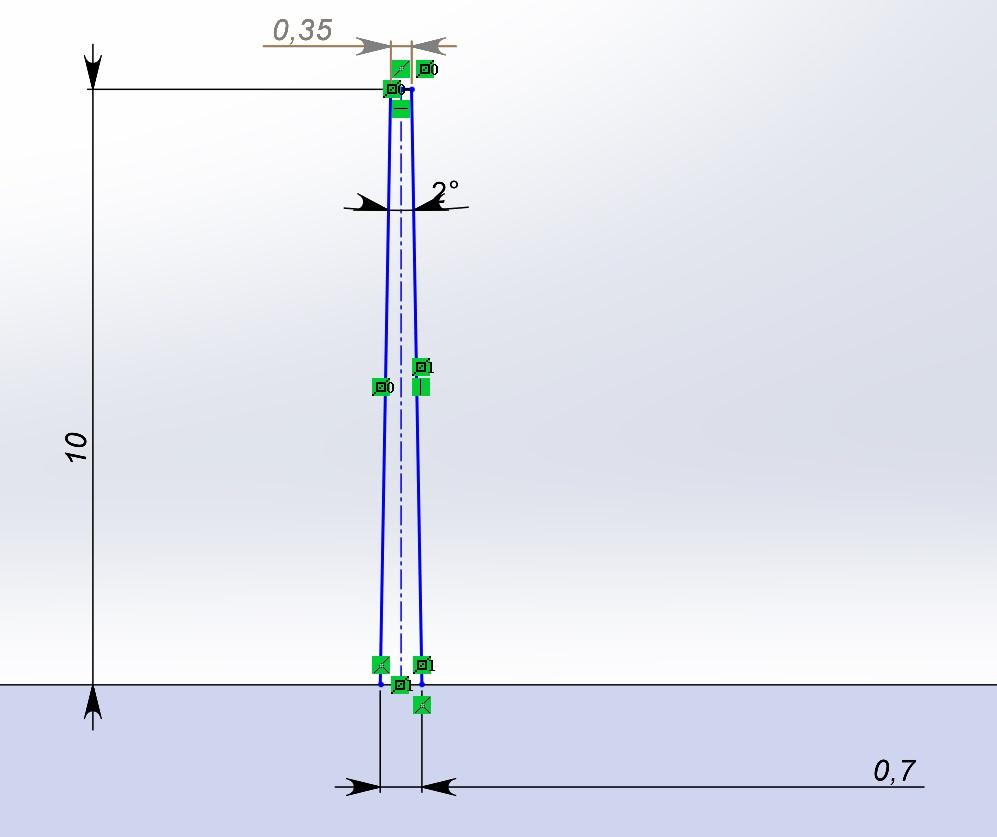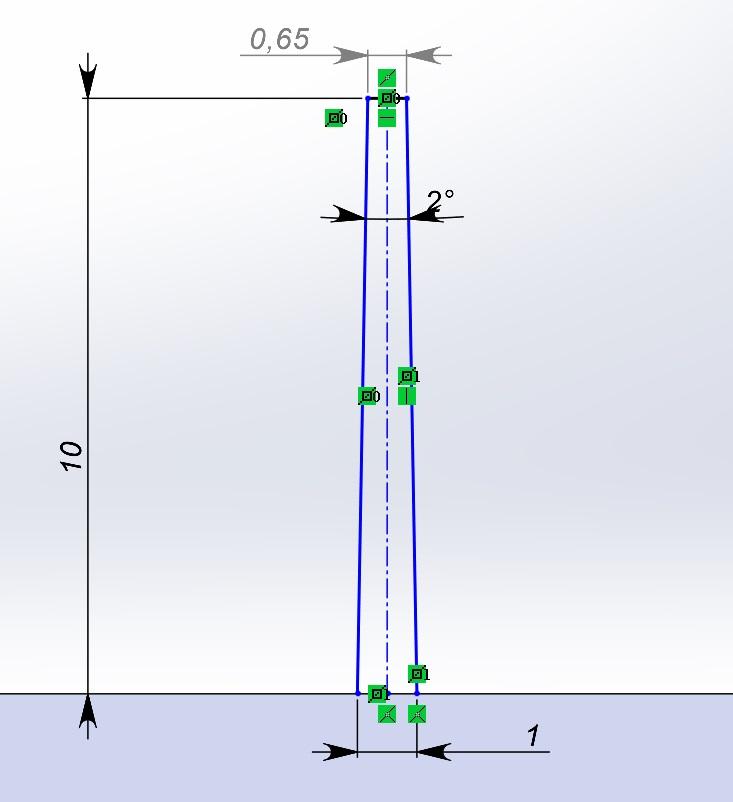Forum Replies Created
-
Anton Huryn15.05.2025 at 12:13Xometry Engineer
Hi everyone! I agree that 0.7 mm is not enough for molding, because we must keep in mind the draft angles, which are also necessary.
So if the thickness at the bottom of the wall is 0.7 mm, even with a height of 10 mm and an angle of 1 degree on each side (recommended), the thickness at the top will be only 0.35 mm.
As you can see in the picture, with a thickness of 1 mm we get a pretty good result at the top of the rib.
I hope that makes sense to you.
Have a good day 🙂
0in reply to: Injection molding wall thicknesses – tips?Anton Huryn23.05.2024 at 10:32Xometry EngineerQuantumQuestHi all, I partially support the opinion that Solidworks is better suited for large assemblies.
In my experience I can say that when designing a Fire Truck with about 10,000 parts Solidworks is much faster than Fusion.By the way Solidworks has a special option “large assembly”, I hope I spelled the name correctly. 🙂
This command makes it even easier to work with the assembly. As far as I understand during the work (rotation, Zoom in, Zoom out, etc) the program simplifies 3D models to primitives and reduces the load on the computer.
Of course the main question is the price. But in my opinion it is justified if we are talking about speed and convenience of work.
I do not think that for educational purposes are used large assemblies (more than 500 elements), so for sure for educational purposes is suitable Fusion, but if you are a professional in a large enterprise I think Solidworks is your choice.
3Anton Huryn10.05.2024 at 11:27Xometry EngineerThank you for your response.
it looks like you filled out the request form correctly.
in terms of surface quality
Unfortunately, we cannot give you a precise recommendation on the finish, as we do not know the application conditions of the part.
You can check our article on surface finishing, which is quite detailed and also order a die with finishing examples.In general, if it is a view (transparent/semi-transparent) part, we recommend SPI A1…A2.
If the transparent/semi-transparent part needs a small grain surfaces, we would recommend SPI D-1 or VDI 21/24/27 depending on your needs.
Hope this helps you.0Anton Huryn10.05.2024 at 09:37Xometry EngineerHello, thank you for your interest in contacting us.
For your inquiry, we suggest you consider Makrolon® 6557:- flame retardant; UL 94V-0/3.0 mm;
- UV stabilized; easy release;
- Available in transparent, translucent and opaque colors
- can be transparent / translucent up to about 4mm thick.
For quality molding, we also do not recommend exceeding a wall thickness of 4mm for this material.
Please try to modify the design by adding stiffeners / recesses instead of additional wall thickness.We hope this will be helpful to you.
-
This reply was modified 1 year, 7 months ago by
Anton Huryn.
-
This reply was modified 1 year, 6 months ago by
Uliana Krayneva.
0Anton Huryn30.04.2024 at 17:07Xometry EngineerInitially, I would recommend using 3d printing for a rough estimate of the design. If everything is clear with the plus-minus design, then you can move into vacuum casting. Usually vacuum casting is beneficial for not very large parts and with a total batch of about 100 pieces. Further it is necessary to look at the economics. Usually we offer our customers an optimal price/quality ratio. You can make a request for a price estimate and we will gladly provide you with different variations of production of your prototypes.
0in reply to: Vacuum casting or injection moulding for 20-30 pcs?Anton Huryn30.04.2024 at 16:58Xometry EngineerDamien P. BrownI would like to add that every material has a shrinkage index, which must also be taken into account.
The shrinkage angles must be adjusted to this value as well.
We have a lot of experience in making export molds and believe me I know what I’m talking about 😉
0in reply to: Draft angles in injection moulding questionAnton Huryn30.04.2024 at 16:57Xometry EngineerHi everyone! I agree that 0.7 mm is not enough for casting,
because we have to keep in mind the draft angles, which are also necessary.
So if the bottom of the wall thickness is 0.7 mm, even with a height of 10 mm and an angle of 1 degree on each side (recommended), the top thickness will be only 0.35 mm.
As you can see in the picture, with a thickness of 1 mm you get a pretty good result at the top of the rib.
I hope this is helpful to you,
have a good day 🙂1in reply to: Injection molding wall thicknesses – tips?Anton Huryn15.04.2024 at 12:19Xometry EngineerHey, everybody. Unfortunately I have little experience with unofficial addons. I mainly use Solidworks program, it satisfies my needs 99%. The main addons I use are:
Solidworks simulation – great at determining the stress points of a part. Allows you to modify the design in real time to improve the finished product.
Solidworks flow simulaion – a good application for predicting the behavior of liquids or air flows according to given parameters, this application helped me a lot when I was preparing my thesis on the distribution of particles on the adhesive surface by spraying.
Solidworks plastics – great addon for simulating molten plastic flows and predicting possible future problem areas.
Solidworks electric – allows you to add flexible curves to the assembly and helps to make the 3D model changeable.
Toolbox – it speeds up the work on adding standard elements to the assembly.
I think that’s the main thing I can share.
have a good day and good luck with your modeling.
 Europe
Europe  Türkiye
Türkiye  United Kingdom
United Kingdom  Global
Global 

 Login with my Xometry account
Login with my Xometry account 




